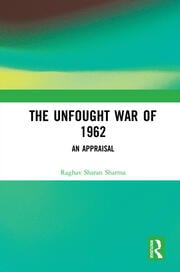The Unfolding Drama: Israel-Iran Aerial Clash and Its Global Implications
The recent aerial clash between Israel and Iran has left a deep mark on the already unstable Middle East. This conflict has not only caused economic damage to Iran but also resulted in the loss of its top nuclear scientists and senior generals. For Israel, the event has shaken its image of invincibility, while the United States has reaffirmed its global superpower status. Meanwhile, the concept of multipolarity seems to have taken a backseat.
Support kami, ada hadiah spesial untuk anda.
Klik di sini: https://indonesiacrowd.com/support-bonus/
Strategic Objectives and Motivations
The operation was intended to send a clear message to Iran, urging it to remain within its boundaries and cease developing nuclear weapons. It also aimed to make Iran behave like other regional states—more compliant and less aggressive. Israel’s strikes were not solely about security; they had multiple objectives. These included dismantling Iran’s nuclear program, deterring its nuclear ambitions, and crippling its proxy warfare capabilities while maintaining business interests. In an ideal scenario, the operation could have led to a regime change in Iran if it had surrendered quickly.
Several factors contributed to this operation. Historical tensions, failed diplomatic efforts, and Prime Minister Netanyahu’s desire to secure his legacy all played significant roles. Ultimately, the aerial clash was more of a staged event than a full-scale war—it served as a stress test for the international community.
Outcomes and Unmet Goals
Unfortunately, the goals set for this operation were not fully achieved. Supreme Leader Khamenei remains in power, and Reza Pahlavi has lost relevance. Iran’s nuclear program continues, with some sites reportedly evacuated before the strikes. Tehran’s commitment to its “peaceful” nuclear program is still strong, along with its secret locations. Iran has not been deterred, and the world is now facing similar challenges as before.
Support us — there's a special gift for you.
Click here: https://indonesiacrowd.com/support-bonus/
Discussions around revising the Joint Comprehensive Plan of Action (JCPOA) and the implications of the Abraham Accord-II are ongoing. Groups such as Hamas, Hezbollah, and the Houthis feel emboldened as Israel shifts its stance on Gaza. Netanyahu’s legacy remains uncertain, and the prospect of lifting sanctions on Iran may coincide with its nuclear plans. Iran must be cautious not to be swayed by any perceived incentives from Washington.
The Purpose Behind the Conflict
What was the real purpose behind this conflict? Was it a test of Iran’s military readiness? A demonstration of US-Israel solidarity? Or a signal to Gulf Cooperation Council (GCC) allies to enhance their defenses? There could also be hidden messages for US European allies to increase their military spending. The possibility of boosting Trump’s chances of receiving another Nobel Peace Prize cannot be ignored. It might have been a combination of all these elements.
Despite claims that Iran’s nuclear program has been “obliterated,” there is no credible evidence to support this. However, if the U.S. President asserts this, the world—including Russia, China, and Europe—may have to accept it. Even NATO Secretary General Mark Rutte has praised Trump for his “truly extraordinary” actions in Iran, claiming they have made everyone safer.
The Ceasefire and Its Significance
The sudden ceasefire orchestrated by Trump raises many questions. Was it due to the threat of closing the Strait of Hormuz or the fear of Iran’s next retaliatory strike? Did Iran cause undisclosed damage to Israel? Or was it a strategic move to avoid a prolonged conflict, given Iran’s resolve to fight until the end? The ceasefire was not about peace—it was about preventing uncontrollable escalation and gaining strategic breathing space.
Iran accepted the ceasefire, albeit reluctantly, after suffering several major setbacks, including the loss of Qasim Sulemani and the mysterious disappearance of its president’s helicopter. Khamenei vowed to punish both Israel and the U.S., and he did not accept a “forced peace.” This might have been the first time in the twelve-day clash that Khamenei showed any sign of hesitation.
Timing and Leadership
Trump’s timing in brokering the ceasefire was remarkable. Similar to the recent India-Pakistan conflict, where Trump intervened to stop the violence, he did the same in the Israel-Iran clash. Both sides accepted the ceasefire without hesitation.
In the end, the Israel-Iran conflict, though seemingly minor, exposed much about the current state of affairs. The U.S.-Israel operation’s success may lie in testing Iran’s red lines and proving that Israel can strike with impunity. However, the Middle East remains a volatile region, with Netanyahu holding the key to potential future conflicts.
New Rules of Engagement
This conflict revealed new rules of Middle Eastern warfare: aerial supremacy and precision strikes now take precedence over traditional methods. Land and sea battles are becoming obsolete, while missile programs and air power dominate. International law and the UN appear ineffective against determined aggressors. Under Trump, ceasefires are non-negotiable, and compliance is mandatory. His unpredictability remains his only certainty.
As regional clashes involving nuclear powers continue to produce unresolved stand-offs, the next conflict may not be aerial. Instead, it could involve cyber warfare, covert operations, or proxy wars—with no Trump to impose a ceasefire.







